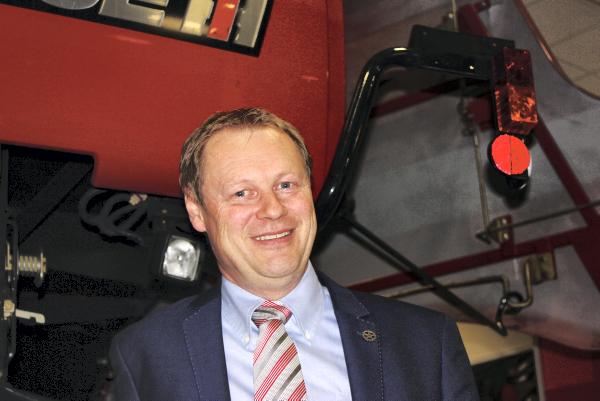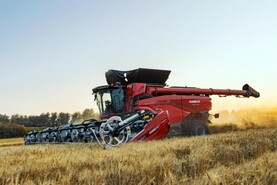While the tractor industry is now discussing Tier 5, these developments have put a lot of difficulties on customers in farming, according to Christian Muller, managing director of Case IH’s St Valentin factory and head of product development at CNH Agriculture.
“It costs a lot of money to bring NOx emissions to where we are today, the discussion would make more sense if other countries such as China and India were in the system,” he added.
Going from Tier 4B to Tier 5 in terms of tractor engine emissions means that the amount of NOx and carbon reduction is minimum compared to other countries working with Tier 1. It is difficult to understand the reason why we need to do it, he added.
“There is a huge investment involved but little benefit for customers and little benefit for Case IH,” said Christian Muller.
He added that some of the engine after-treatment systems required to meet new engine emission regulations are big and have an impact on the driver visibility with smaller tractors. He said that by the time the new regulations are in place, some new alternative methods may be available.
CNH Industrial is working with Fiat Power Train (FPT) to design engines to suit specific criteria. “We are looking to the future and the direction of tractor engine changes. We are working with methane gas, biogas, electrification and other systems, so that we are well placed to meet the possible political changes that may come in the future,” said Christian Muller.
He accepts that soil compaction is the big discussion point when it comes to tractors for the future. “In the future, as population is growing and available land is shrinking, we need to get more from soil and if adding more and more weight, we cannot get more crops. We need to protect the soil in a better way,” he added.
Efficient
CNH is working with universities around the world to try to understand the way in which tractors and implements can be more efficient. “For the future we need to think about reducing the size of tractors and implements and running them autonomously to reduce soil compaction, maybe powered by farm produced energy.”
There will be a lot of changes in the future, Muller believes, and this will include autonomous tractors working in the fields when the conditions are best for the soil and the crop to be grown.






 This is a subscriber-only article
This is a subscriber-only article











SHARING OPTIONS: